2025-03-31 11:41:09
Sasha Engelmann
Nicosia, Cyprus
Cyprus
NOAA-18


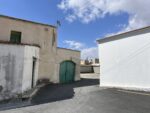
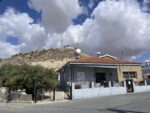
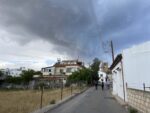
Teaching undergraduate UK geography students in Nicosia, Cyprus is an experience of a clash between worlds- the worlds of Greek and Turkish Cypriots living across checkpoints and buffer zones, and those of students eager to extract 'data' on life in a divided city. Standing on the beach of the suburb of Varosha, yesterday, our guide Georgia pointed to her apartment building, framed by two once-regal hotels, to which she she has not been able to return, like all residents of Varosha, since the Turkish army arrived in 1974. She was due to be married on the day she had to leave her town. She points out fields that once boasted dense orange groves, and speaks about the tradition of making sculptures from oranges in the shapes of dolphins and other animals. She shows us the shop that had the "best cheese sandwich of the 70s- a delicacy", and the boutique where women would buy fur coats. An abandoned kiosk marks the place where Varosha first served soft ice cream. There is an eeriness both to being in such places on a research trip, and to seeing the ruins being photographed by the numerous passerby and members of the public. Many pose in front of dilapidated photo shops and ruined movie theatres. We speak about ruins, aesthetics, dark tourism and what the gesture of taking a selfie in Varosha means. It is unseasonably warm in Cyprus, as most residents tell us- at least ten degrees above the average temperature of springtime. Saharan dust arrived in Nicosia over the weekend.
2024-08-27 11:52:02
Sasha Engelmann
Hackney Downs, London, United Kingdom
United Kingdom
NOAA-18

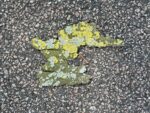
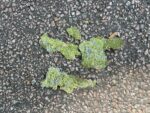
Another windy day, with gusts coming from both the south and west across Hackney Downs. Tree branches and pieces of bark have been peeled off trees and lie on the pavement or grass. Once again my tape measure Yagi was pushed and pulled around by the air, and once again I feared the delicate bits of soldering would come undone. When the dipoles bent down at odd angles, lines of noise permeated the audio recording. I realised today that I had never fully explored the fact that antennas could be malleable- able to move and bend with the wind. We associate antennas with very tall steel towers or elaborate metal sculptures that are nevertheless solid and static- but what about an antenna made of flexible material? I've been aware of 'wearable antennas' via the work of artists like Afroditi Psarra or Audrey Briot, and I have seen experiments in metal weaving, but my tape measure Yagi has raised other questions about working with semi-flexible, yet conductive materials that change rather than holding shape when exposed to air.
2024-07-26 19:58:20
Marlene Wagner and Soph Dyer
Seestadt, Wien, Austria
Austria
NOAA-19


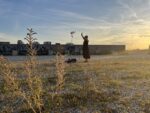
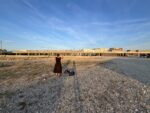
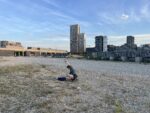
Warm wind, residual heat. U-Bahn, aeroplanes, kids on the beach, gravel under our feet. Long shadows where the city meets the landscape.